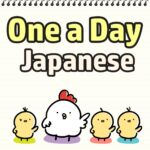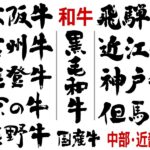General Q: How to count
There are too many ways to count. Is there any shortcut?
Native speakers learn basic counting classifiers as they grow up. There are more than 500 ways to count, but around 50 are commonly seen or used in daily life. If you remember 15 listed below, you will be more than great.

General
- こ・ko・個= solid items usually small enough to carry = apple, cake, battery,
- まい・mai・枚= flat/sheet type items = paper, photo, steak, plate, toast
- ほん・hon・本=stick/long type items = pen, bottle, banana, carrots
- だい・dai・台=solid mechanical items = car, machine, computer, TV, oven
- はい・hai・杯= items when counted by cup, spoon, containers = drink, rice, sauce
Animals/Creatures
- ひき・hiki・匹=smaller animals, fish, insects = dogs, salmon, mouse, beetle, fly
- とう・tō・頭=larger animals = elephant, tiger, horse, cow
- わ・wa・羽=winged animals = chicken, dove, eagle,
- にん・nin・人=humans
How items are presented/packed
- さつ・satu・冊=bounded paper items = books, magazines
- ふくろ・hukuro・袋=items in a bag or powdery items in a bag = food in a bag
- はこ・hako・箱=items in a box = tissue, candies
- たば・taba・束=bunched items = spinach, bills, papers
Number of occurrences, order
- かい・kai・回=how many times
- ばん・ban・番=used with numbers to show order
When in doubt, you can say "item name + simple number" (survival way).
- 1 apple = Ringo 1ko (ikko) = ringo 1 (iti)
- 2 books = Hon 2 satu (ni satu) = hon 2 (ni)
Tip & Comment
![]()
Counting is one of the most challenging subjects. Not only the kinds of classifier/counter suffix, there are some exceptions, for example, 1 person = "HITORI", and not "ITI NIN". 2 persons = "FUTARI", and not "NI NIN". But if you know the 15 above, you will be fine. Counting in more detail including exceptions will be covered in future lessons.
 Let's learn Japanese!
Let's learn Japanese!




